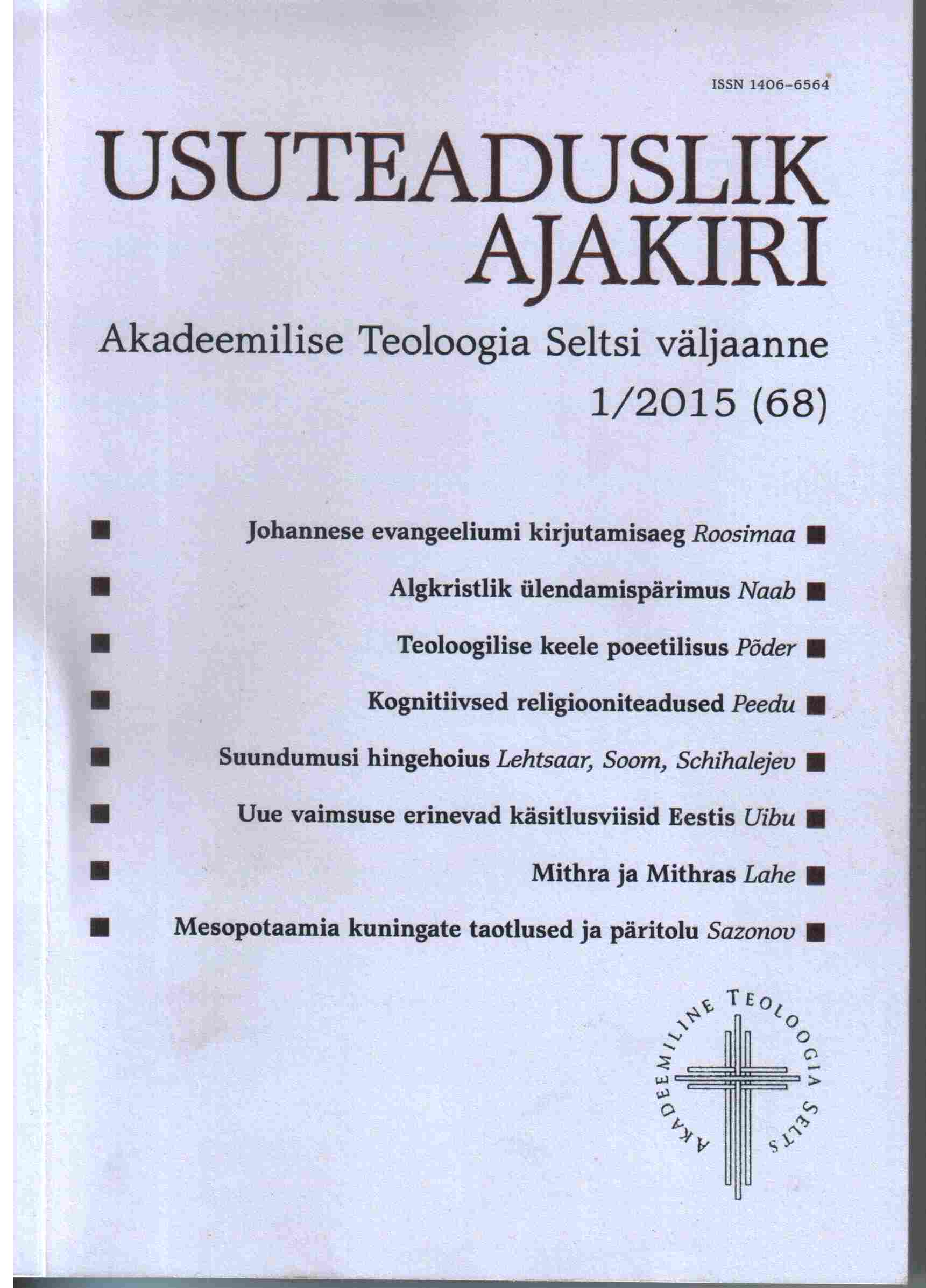Mesopotaamia kuningate universalistlikud taotlused, jumalik päritolu ning valitejate jumalikustamine Varadünastilisel ja Akkadi ajastul
Universalistic ambitions and Claims of Divine Origin of Early Dynastic Sumerian and Akkadian rulers
Author(s): Vladimir SazonovSubject(s): Cultural history, Comparative history, Ancient World, Theology and Religion, Comparative Studies of Religion, Sociology of Religion
Published by: Akadeemiline Teoloogia Selts
Keywords: Ancient Near-East Studies;History of Religions;
Summary/Abstract: As we can see, ideology and religion (theology) played a significant role in warfare and especially in the justification of wars in Mesopotamia already since ca. 2400 BCE (or even earlier). We have hundreds of pieces of evidence from Ancient Mesopotamia where the ruler used theological justification for his military campaign or the invasion of another country. The theology of warfare in Ancient Mesopotamia developed with the new period and became better formulated and more complex during the course of history. If the inscription of Ur-Nanše (Early Dynastic ruler of Lagash) does not document the use theology (or much use of it) to support his wars against Umma (we have no evidence) then his grandson E-anatum certainly did use it and lot of relevant ideas were already quite well developed. Many ideas from the Early Dynastic period (E-anatum, En-metena, Lugal-zage-si, etc.) were adapted by Sargonic kings such as Sargon of Akkad or Naram-Sîn, or Neo-Sumerian kings (Ur-Namma, Šulgi) who tried to implement theology more effectively than their predecessors. We can see that the theology of war was used by Sargonic and Neo-Sumerian kings in their aggressive politics as a tool for justifying war; theology even helped them to create a centralized state (Akkadian ‘empire’, Neo-Sumerian kingdom). In the Ur III period we find many texts (especially Šulgi’s hymns, royal inscriptions, etc.) in which theology was often used very masterfully and to propagandistic ends, and it seems that the theology of war at that time was already quite well-developed. In Assyria as far back as the late second millennium (Middle Assyrian period) and the first millennium BCE the theology of war became a very important part of state ideology, one of the fundamental pillars of state propaganda, and was used for justifying wars, deportations, mass killing, etc. So the theology of war is a very old and traditional phenomenon, continually changing, developing, transforming with each new epoch or new term of rule, yet still retaining many similarities with its earlier manifestations. If we compare the theological justification of the Neo-Assyrian kings with that of the period of E-anatum, En-metena, Lugal-zage-si or the Sargonic periood or the Ur III period, we find a lot of similarities and certain differences. Of course, on the one hand it was the same Mesopotamian cultural area where people greatly honoured ancient tradition, while on the other hand it was also a dynamic culture, not isolated from outside influences. This is the reason why in the inscriptions of the Neo-Assyrian kings we find several elements originating from earlier times – from their predecessors in Assyria, but also from even the Early Dynastic, Sargonic, Neo-Sumerian and Old Babylonian periods.
Journal: Usuteaduslik Ajakiri
- Issue Year: 2015
- Issue No: 1 (68)
- Page Range: 152-181
- Page Count: 30
- Language: English

